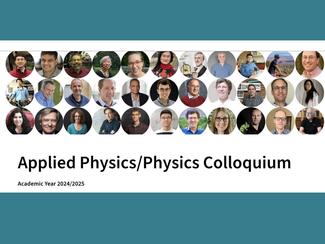
Optimization of Charged-Particle Devices using the Adjoint Variable Method
Spilker 232
(4:00 pm refreshments)
ABSTRACT: Charged-particle devices are governed by non-linear systems of equations and each device’s performance is determined by a high-dimensional parameter space. Both problem features make a rigorous, gradient-based, optimization burdensome. In this talk, we show how to set up and implement an optimization problem for these devices using the Adjoint Variable Method, which has enabled rapid computationally efficient optimization in other fields such as photonics and aerospace engineering. We will show and compare an implementation based on the Finite-Element Method and on the Boundary Element Method. We will further demonstrate the power of our technique with an optimization of a charged-particle lens system as well as preliminary results from an optimization of a surface-electrode trapped-ion quantum computing gate.
Bio: Lars is currently working as a Senior Product Engineer in the Semiconductor Industry (Siemens Digital Industries Software, formerly Mentor Graphics). He focuses on High-Performance Computing, and next generation modeling techniques, incl. AI modeling. Prior, he obtained a Ph.D. from Stanford University in Electrical Engineering working with Professor Hesselink on the computationally-efficient optimization of charged-particle devices, such as electron lenses and quantum computing hardware. He won the “Best Presentation” award at EIPBN 2022 for this work. Lars also has many years of experience teaching human-centered design at Stanford’s design school.